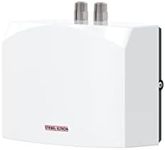Buying Guide for the Best Tankless Water Heaters
Choosing the right tankless water heater can significantly impact your home's energy efficiency and your comfort. Unlike traditional water heaters, tankless models heat water on demand, which means they can provide a continuous supply of hot water without the need for a storage tank. When selecting a tankless water heater, it's important to consider several key specifications to ensure it meets your household's needs. Understanding these specifications will help you make an informed decision and choose a model that provides the best performance for your situation.Flow Rate (GPM)Flow rate, measured in gallons per minute (GPM), indicates how much hot water the heater can produce at a time. This is crucial because it determines whether the heater can meet your household's hot water demands. For example, a shower typically requires 2-3 GPM, while a dishwasher might need 1-2 GPM. If you have a large family or multiple appliances running simultaneously, you'll need a higher flow rate. Consider your peak usage times and add up the GPM requirements to find a suitable flow rate for your needs.
Energy EfficiencyEnergy efficiency in tankless water heaters is often represented by the Energy Factor (EF) or Uniform Energy Factor (UEF). This spec tells you how efficiently the heater converts energy into hot water. A higher EF or UEF means better efficiency, which can lead to lower energy bills. Look for models with high efficiency ratings if you want to save on energy costs and reduce your environmental footprint. Consider your usage patterns and how much you value energy savings when choosing the right efficiency level.
Fuel TypeTankless water heaters can be powered by electricity, natural gas, or propane. The choice of fuel type affects installation costs, operating costs, and performance. Electric models are generally easier to install and maintain, but may have higher operating costs. Gas models often provide higher flow rates and are more efficient for larger households, but require proper venting and may have higher installation costs. Consider the availability of fuel sources in your area and your household's hot water needs when selecting the fuel type.
Size and Installation RequirementsThe physical size of the tankless water heater and its installation requirements are important to consider, especially if space is limited. Tankless models are generally more compact than traditional heaters, but you still need to ensure there's enough space for installation and maintenance. Additionally, gas models require venting, which can affect where they can be installed. Evaluate the available space in your home and consult with a professional to understand the installation requirements for different models.
Temperature RiseTemperature rise refers to the difference between the incoming water temperature and the desired output temperature. This spec is important because it affects the heater's ability to provide hot water at your preferred temperature. If you live in a colder climate, you'll need a model that can handle a higher temperature rise. Consider the coldest water temperature in your area and the temperature you want for your hot water to determine the necessary temperature rise for your heater.
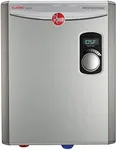



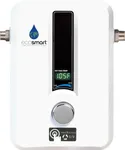
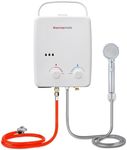
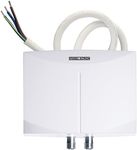
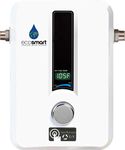



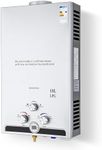
![CO-Z Gas Water Heater, 10L LPG Water Heater with Winter & Summer Modes, 17kW Stainless Steel Tankless Water Heater, Hot Water Heater with LED Display,Use for Outdoor Camping,Trip [Energy Class A]](https://images-proxy.bestreviews.guide/AwSIMF_K5YGTgZQ3jOkYMQNhKbA=/0x150/https://m.media-amazon.com/images/I/31DuLFrEx4L._AC_CX679_.jpg)

